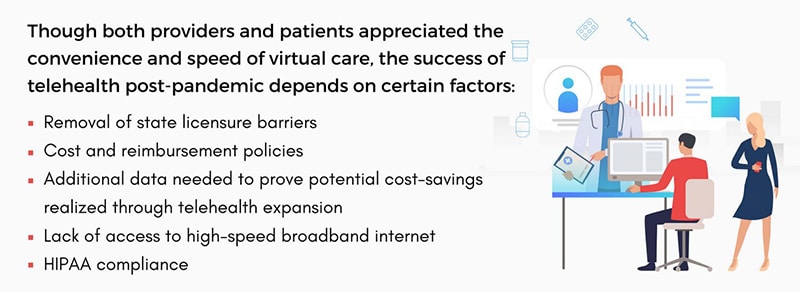
Telemedicine – the delivery of healthcare using digital communication technology – has been around for a long time, but has faced numerous obstacles to widespread adoption. Beyond some operational and clinical hurdles, the extensive implementation of telehealth has been hindered by various legal and regulatory barriers. With the COVID-19 pandemic and the social distancing – that is recommended as the standard for mitigating its impact- the adoption of telehealth increased rapidly across the country. Federal and state laws and regulations that were once a hurdle were relaxed to enhance the ability of physicians to provide and patients to receive telehealth services effectively. Many industry experts see this as a real opportunity for medicine to embrace telemedicine and remote monitoring more often. They are also predicting that telehealth will continue to stay and grow even after the pandemic, and our medical transcription company agrees with these views.

Telehealth’s Impact on Healthcare and Accessibility beyond the Pandemic
As telehealth has the potential to reduce healthcare costs, change the way providers treat their patients, and improve patient outreach and health outcomes, many professional medical societies endorse telehealth services and provide guidance for medical practices in this evolving landscape (cdc.gov). Moreover, in a post-pandemic world, we can expect that telehealth technology will advance further, which will accelerate its influence on the healthcare industry.
Telemedicine also helps patients who need continuing treatment, live in remote locations, or have limited mobility. These are just a few of the other advantages it offers beyond crisis response. The seamless integration of telehealth services into current infrastructure is crucial to enhance patient care and broaden healthcare accessibility as healthcare systems undergo continuous adaptation.
Want to know how EHR documentation is done for Telehealth visits? Read our blog post Strategies to Streamline EHR Documentation for Telehealth Visits


